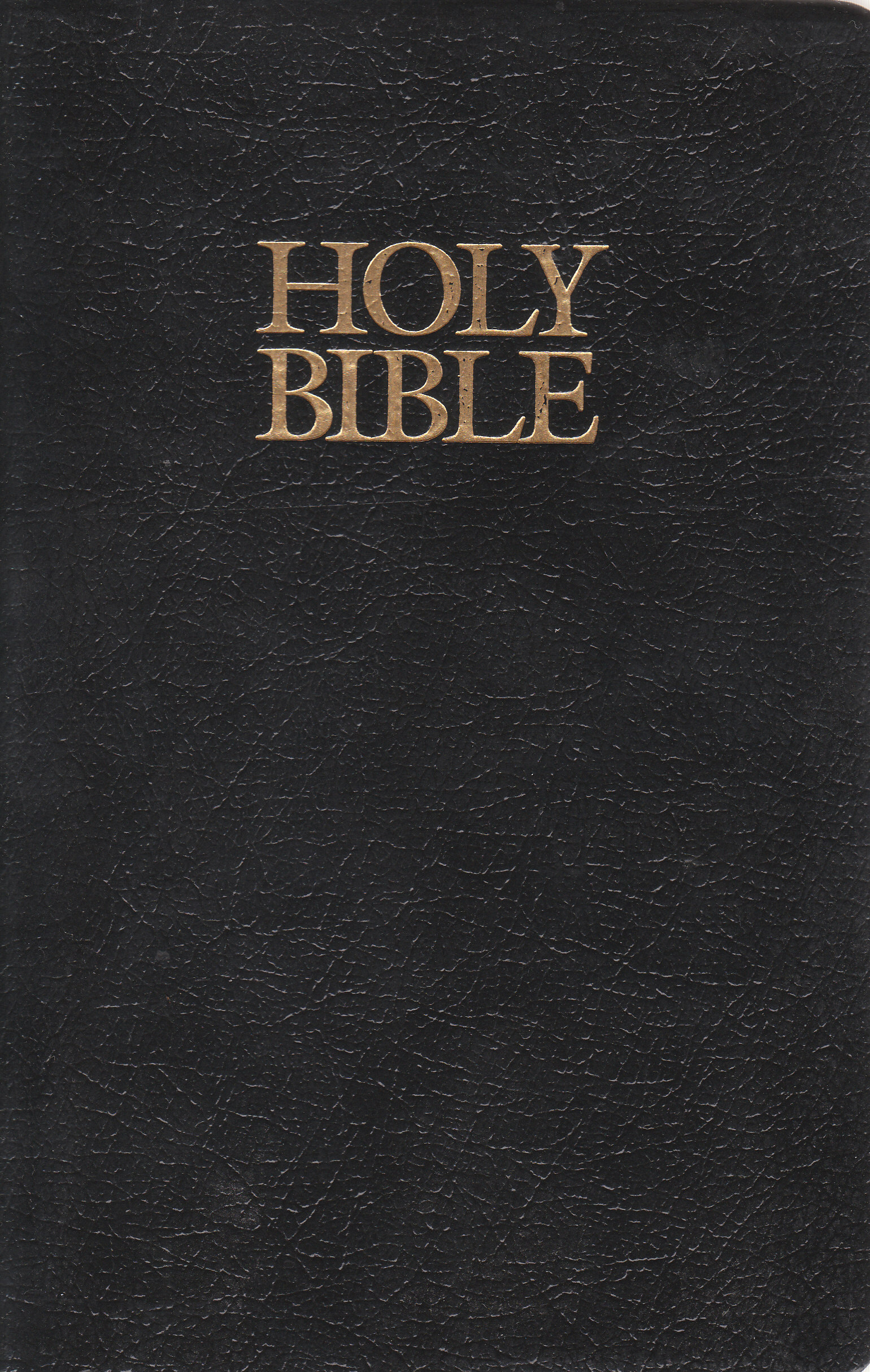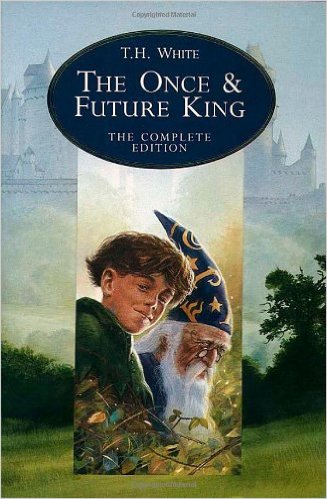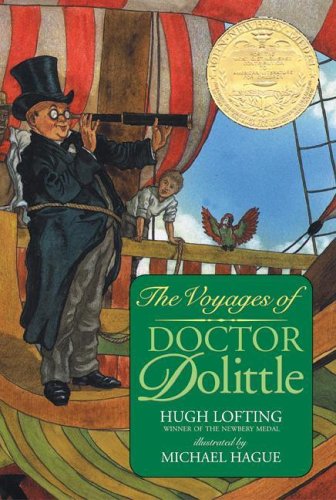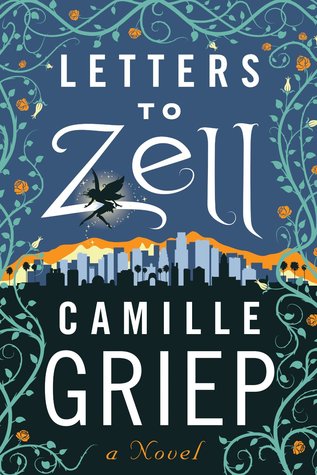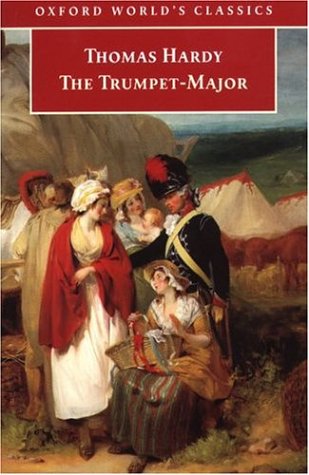But there are several reasons why I’m going to go ahead and put the Bible on the Book Trolley after all. For one, even non-believers acknowledge it as one of the highest achievements in world literature. In the English language, the Authorized (King James) Version especially holds a place alongside the works of Chaucer and Shakespeare as a fountain of literary inspiration and a mainstay of our language and lore. It could even be argued that the modern English language came into being because of the Authorized Version.
For two, the purpose of the Book Trolley is to recommend books that people might not think of reading but that they might enjoy, if Harry Potter has taught them to love reading but they don’t know where to turn next; books that might bring more than enjoyment–that lift you up, move you, change your life; books that might not be on the Bestseller rack or your school reading list, but that shouldn’t be ignored.
And for three, as a lover of God’s Word as well as of the written word in general, I think The Holy Bible is a book to be taken seriously, to be enjoyed, and to return to again and again because its beauty, its power, its uniqueness, and its grandeur of ideas never grows tiresome. However, most people who try reading it from cover to cover, flounder somewhere around the Book of Leviticus. So the real purpose of this “review” will be a few handy pointers on what the “Books of the Bible” are about, and some helpful bits of advice on when and how to read them.
The Bible is actually not one book, but an anthology of books by various authors (who claimed to be writing by inspiration of God) over a period of about 2,500 years. It was written in 3 languages and is divided into 2 or 3 major groups of books, which were originally written on separate scrolls of parchment and read aloud, a chapter at a time, in synagogues and churches. The books of the Bible contain history, drama, poetry, prophecy, letters, and genealogical records stretching from the time of Moses to a few decades after the crucifixion of Jesus Christ.
The first main section of the Bible is called the Old Testament. It consists of 39 books, most of which were originally written in Hebrew, and they can still be read in the original Hebrew. A few passages are written in Aramaic, which was the commonly spoken language of the Holy Land at the time. These were the “canonical scriptures” of the Jews, which were studied and written about and talked about by Jewish believers for centuries, and which were retained by the early Christian Church that sprang out of Judaism. A Hebrew name for these 39 books is “Tanakh,” which actually comes from an acronym for the three main parts of Hebrew scripture: Law, Prophets, and Writings.
The Old Testament begins with the five Books of Moses, collectively known as the Pentateuch. The first, Genesis, includes the story of how God created the world in six days; the sin of Adam and Eve; the murder of Abel; the flood of Noah; the tower of Babel; and the long, exotic, wondrous stories of Abraham, Isaac, Jacob, and Joseph (he of the “amazing technicolor dreamcoat”). Then Exodus takes up the story of Moses himself: a great deliverer who inflicted ten plagues on Egypt, delivered the children of Israel from servitude, and handed down laws from God to his people (as you can see in the movies The Ten Commandments and Prince of Egypt). Leviticus is mainly concerned with the laws of Jewish ritual and ethics. Numbers, so named because it contains a lot of census data, also has some surprising stories in it, such as the incident of Balaam and the Talking Ass. And Deuteronomy (literally, “Second Law”) reads mainly as a farewell sermon from Moses to the children of Israel, when he was preparing to die.
After the Pentateuch, there are several other “historical books” in the Old Testament. Joshua picks up where Deuteronomy left off, with the faithful leader Joshua who led the Jews into the “promised land,” where they conquered the tribes that had taken over the place while they were in Egypt. The Book of Judges tells about Joshua’s successors, who led military sorties and settled disputes at a time when Israel had no king. Some of the most vivid, raunchy, and gory stories in the Bible are in Judges: Samson and Delilah, Gideon and the walls of Jericho, Jephthah and his daughter, Deborah and Jael, etc. The book of Ruth tells the short but moving story of a Moabite woman whose faithfulness to her widowed, Jewish mother-in-law leads her to become a rich man’s wife and a king’s ancestor. The twin books of Samuel (really one book, but it was so long that it needed two scrolls) start with the story of the prophet Samuel and continue with the adventures of King Saul and especially King David–the man after God’s own heart. The two books of Kings continue with the reign of David’s son, Solomon, and the good and bad kings of the Divided Kingdom after him. The two books of Chronicles are a condensed retelling of the books of Samuel and Kings. The closely related books of Ezra and Nehemiah tell of the return of God’s people from exile, after the collapse of the kingdom and a series of conquests by the Assyrian, Babylonian, Persian, and Mede. These may have been the last books of the Old Testament to be written. And finally, the historical books close with the tale of Esther, a beautiful Jewish maiden who saved her people from being butchered by an antisemitic dirtbag named Haman.
Then there are the “poetical books” of the Old Testament. Job, possibly the oldest book of the Bible, tells the story of a pious man who was afflicted in every way possible, more or less to test his faith. The tale is told in flowery, dramatic poetry in which a group of characters takes turn making long speeches, arguing about why God lets bad things happen to good people. Then comes the book of Psalms consisting of 150 songs of praise, prayer, lamentation, and religious instruction. They range from the shortest chapter of the Bible (Psalm 117: two verses) to the longest (Psalm 119: 176 verses). The Proverbs contain the wise sayings of King Solomon, probably arranged for the instruction of young princes. Ecclesiastes (“the Preacher”) is Solomon’s sermon on what is truly important in life, and the Song of Songs (also by Solomon) is a fragrant, passionate demonstration of what ancient, royal love poetry was like. (Some people worry that this book shouldn’t be in the Bible at all, but others say that it’s an allegory, that it’s really about the “marriage” between God and his people.)
The rest of the Old Testament consists of “prophetic books,” many of which (according to the New Testament) directly predict the coming of Jesus Christ. The major prophets are Isaiah, Jeremiah (who also wrote the Book of Lamentations), Ezekiel, and Daniel. Besides a lot of prophetic poetry, these books contain a good deal of history and also some Psalm-like hymns to God. Daniel, for instance, wrote of how he was imprisoned in a lion’s den and lived to tell the tale, and how three of his friends got chucked into a blazing furnace and ditto. Finally there are the 12 “minor prophets,” whose names I’ll leave you to find out for yourself, though many of them make a very strong impression in just a few chapters–such as Jonah, who was swallowed by a giant fish and, three days later, was coughed up on dry land.
The next great division of the Bible is called (big surprise!) the New Testament. Its 27 books were written in an ancient Greek dialect that, for a while, was spoken all over the Roman empire. The purpose of the New Testament is to proclaim that Jesus of Nazareth, whose crucifixion was depicted in gory detail in the recent movie The Passion of the Christ, is the Son of God and the Savior of the world. So, the most important part of the New Testament is obviously the part that tells the story of Jesus.
There are four “gospels.” (It’s a hard word to define, because no other literary genre is quite the same, but the word means “good news.”) They are called “The Gospel according to Matthew,” “…according to Mark,” “…according to Luke,” and “…according to John”–or just Matthew, Mark, Luke, and John for short. Matthew is the longest and seems to have been written with Jewish converts to Christianity in mind. Mark, the shortest, shows signs of being written for the church in Rome. Luke, who also wrote the Acts of the Apostles, seemed to emphasize the perspective of the Greek world. These three Gospels, which contain a lot of parallel material, are called “synoptic” (meaning they “see together” or cover the same events). John, on the other hand, consists of mostly fresh material and looks back on the teachings of Jesus from a time when the young Christian Church was troubled by persecution from without and doctrinal disputes within.
Next come the Acts of the Apostles (i.e., the specially appointed followers of Jesus who preached in his name), describing the first few years of the Christian Church’s history, its missionary activities, and its early explosive growth. Then there are nine letters from the Apostle Paul to various churches from central Turkey to Rome, four personal letters from Paul, and an anonymous religious address to “the Hebrews” which might also be Paul’s work. After that there is an assortment of churchly letters from early Christian leaders named James, Peter, John, and Jude, and finally the strange, gorgeous, and awfully controversial Apocalypse, or Revelation, of St. John–a book of symbolic visions that views the history of the Christian Church from a heavenly perspective, including struggles with persecutors, false teachers, temptations to conform to the world, etc., with the basic message, “Hold tight, your reward is coming and it’s worth it.”
There is also a third group of books called the Apocrypha, which are ancient Jewish writings that do not survive in the original Hebrew, and are therefore not considered part of the “Old Testament canon.” An ancient collection of Jewish writings in Greek, called the Septuagint, contained several books and passages in addition to a Greek translation of the Old Testament. These books and passages have continued to be useful (and fascinating) to many Christians, including the Orthodox, Catholics, and some Protestants. I do not regard them as “holy scripture” but I think, as some of the most ancient preserved writings of the church apart from the Bible, their importance should not be underestimated. My favorite book of the Apocrypha is “The Prayer of Manasses.” There are 14 books in the Apocrypha, which are available in several translations. Unfortunately, in the United States you have to buy the Apocrypha separately from the rest of the Bible (except for the Jerusalem Bible), and some versions don’t have it at all.
Once again, I find myself up against the absurdity of saying, “If you like Harry Potter, you might enjoy reading the Bible!” Not to mention the fact MuggleNet isn’t the appropriate place to air a religious agenda. But remember, the Book Trolley is all about pointing out books you might not have read, but ought to give a try. And let me give you three final bits of parting advice:
1. Don’t expect to be able to read the Bible from cover to cover. Choose one book of the Bible and read it. Some books are better for starting out with than others. Mark is a crisp, concise, vivid summary of the life of Jesus which might be perfect for beginners. Except for a couple passages full of hard-to-pronounce names, Genesis is one unforgettable story after another. Other books that are fairly immediate in their appeal are Exodus, Ruth, Samuel, Kings, Esther, Ecclesiastes, the Song of Songs, Daniel, Jonah (or any of the minor prophets), Matthew, Luke, John, or Acts. After reading these books you should be able to handle a major prophet or an epistle (letter) of Paul. In short, feel free to read the books of the Bible out of order, and read other things in between. After all, the Bible is an anthology of 66 (or 80) books, and each book is quite heavy enough, thank you, so don’t drop too many of them on your brain at one time.
2. Choose your translation carefully. There are lots of different versions of the Bible. Some of them (like “Today’s English Version” and “The Living Bible”) are designed for “easy reading,” but they aren’t particularly accurate. Some are so wildly inaccurate that I blush to call them translations (such as “the Message”). Some are intended to be word-for-word accurate (like “The New American Standard Bible”) but they lack beauty and finesse, the music and the vigor for which the Authorized Version is justly famed. I think the “New Revised Standard Version” puts more emphasis on being politically correct than on being faithful to the original Greek and Hebrew. And the “New International Version,” probably the most widely read translation in the U.S., tries to be both accurate and easy to read, but I find its tendency to “over-interpret” irritating and its diction flat, prosaic, and lifeless. A lot of people find the Authorized Version too antiquated and difficult. So my recommendation is to try one of the updates of the Authorized Version, such as the old “Revised Standard Version” (which comes with wonderful tables, maps, and glossaries that can’t be beat) or the “New King James Version.” There are still other translations, but in my opinion, if the poetic parts sound like prose, and if the hard-to-understand parts are simple and instantly understood, the translator didn’t do it right. You go ahead and choose the translation that gives you the most satisfaction, but remember– no translation is perfect!
And finally…
3. Don’t attempt to unlock the secret code of the Bible. By now, so many people have tried that I can all but guarantee you won’t find anything new. But if I may be permitted, let me say this: I think what the Bible “means” isn’t hidden at all. It means exactly what it says, no more, no less. Figuring it out may be challenging because you have to pull what it says from so many different places & fit them together somehow; it doesn’t do all the work for you, it doesn’t necessarily make it easy. But what it says it says with authority, without concealment of any kind. When (if) you read it, try to read the Bible for what it says, and don’t worry about reading between the lines.

